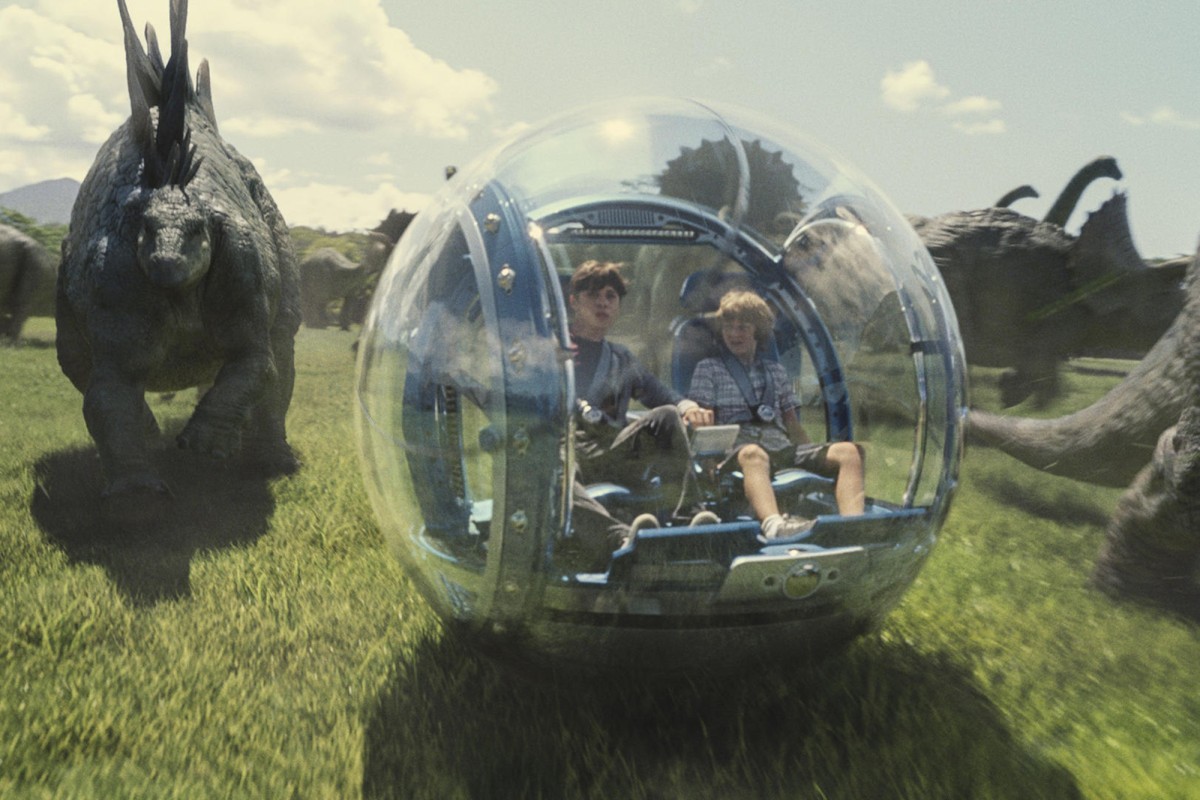
The real Jurassic dinos: Is it a dinosaur or a bird?
With Jurassic World hitting local cinemas, a dino expert reveals how realistic the film is
 Jurassic World has cooler dinosaurs to interest people.
Jurassic World has cooler dinosaurs to interest people.In 1993, Jurassic Park showed us what dinosaurs might have looked like on a movie screen. Now Jurassic World is in cinemas, so we went to see it with Michael Pittman, who saw Jurassic Park as a child and is now a palaeontologist and research assistant professor at the University of Hong Kong, specialising in dinosaurs.
Pittman says he enjoyed Jurassic Park so much that he saw it many times. He still remembers what it was like seeing it for the first time.
“I was sitting in the first row, which was probably the worst place to sit because when it came to the velociraptor scene, I was completely petrified because I was so close to the screen.”
That’s the famous scene where some velociraptors play a deadly game of hide-and-seek with two children inside a kitchen.
“I was quite scared of those (velociraptors) afterwards, which is ironic because those are the dinosaurs that I specialise in today.”
Why we can’t bring back extinct dinosaurs
Pittman knows full well the movies are not meant to be documentaries. That said, they have their issues with factual accuracy, starting with the central premise. The plot is based on the idea that humans managed to get dinosaur DNA from preserved insects that sucked dinosaur blood. Pittman says that’s not very likely.
The animals we consider to be dinosaurs (the ones that went extinct), are called non-avian dinosaurs. Birds are dinosaurs that actually survived the mass extinction event 65 million years ago.
Given that so much time has passed, it is highly unlikely that we’ll find enough DNA fragments to resurrect a non-avian dinosaur. This is because DNA is affected by fossilisation processes which replace an animal’s bone and soft tissue with minerals, turning the animal into a rock.
Why the movie can show dinosaurs that aren’t 100 per cent realistic
Velociraptor and T. rex are probably the two most famous dinosaurs in the series. Unlike the way they appear in the movies, Pittman says they probably had feathers of some kind. T. rex relatives are covered in primitive filament-like feathers whilst velociraptor preserves feather insertion points on its arm bones, just like modern birds. Since Jurassic Park came out, we have learned a lot more about dinosaurs.
He also noted other missing updates in dinosaur appearance. For example, apart from feathers, T. rex should have a thicker, meatier tail.
But, Pittman says you don’t necessarily expect the dinosaurs to be represented accurately in the movie though, because scientists made the dinosaurs in the park through genetic modification. For instance, they might have modified the raptors so they don’t have any feathers.
“That’s almost like an escape clause for any argument for why they don’t look realistic,” he adds.
Why dinosaurs need to be “bigger, cooler and have more teeth”
Jurassic World takes place 22 years after the original Jurassic Park, and the park manager’s comment that people aren’t impressed with “just” dinosaurs anymore. The dinosaurs have to be new to bring in more people, so they start making hybrids.
Pittman says in a way, it also takes more than just a regular dinosaur for him to get excited.
“For me to get excited about dinosaurs, it has to be something pretty strange. I found a dinosaur a few years ago … and it was the only one-fingered dinosaur, so that was pretty exciting.”
As another example, he points to a dinosaur recently found in China that had wings like a bat.
“Those are the kinds of things that excite me, whereas … finding another T. rex or another velociraptor isn’t as exciting because you know, I work with those kinds of animals all the time.”
Dinosaur or bird?
Something that does excite Pittman about his work is how much the field is evolving. For instance, it sounds easy to tell the difference between dinosaurs and birds. You look at what features only dinosaurs have, and what features only birds have, and see where a new species fits. However, Pittman says that just like in all of biology, those defining features are always being studied and amended as topics are revisited and new information becomes available; this is especially true for the study of dinosaurs and early birds.
For example, scientists used to think that Balaur, a Romanian dinosaur, was a close relative of velociraptor. In fact, we now know that it should be considered as an early flightless bird.
Final verdict:
“Even as a dinosaur expert, without commenting on the nitty gritty, I found it entertaining and at times, it had that wow factor that the first one had, not in the whole thing, but in certain parts. But I’m not necessarily going to watch it as many times as the first Jurassic Park.”